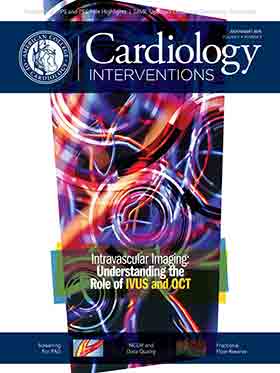Quality Improvement For Institutions | ACC Approach to Data Quality Keeping Pace With Expanding Uses For NCDR Data
When the ACC launched the NCDR in 1997, the primary focus was helping individual hospitals measure and improve their own cardiovascular care through the use and application of clinical data. With data rarely used or shared beyond the participating hospital or the ACC, “data quality” at that time was tied more to completeness and ensuring all required data elements were recorded. Fast forward two decades later and not only has the reach and breadth of NCDR grown, but so has the definition of what constitutes data quality.
As the U.S. health care system continues its transformation from a fee-for-service model to one focused on value-based care and quality, the need to track health care outcomes through registry programs like the NCDR has become increasingly important. While participants in any of NCDR’s 10 registries are still able to track, measure and benchmark their performance, data from the registries are also being used for research, quality improvement, post-market surveillance, and physician and hospital reimbursement purposes.
For example, data from the ICD Registry, STS/ACC TVT Registry and the LAAO Registry have been linked with Centers for Medicare and Medicaid Services (CMS) national coverage determinations to provide evidence development and proof of compliance with reimbursement criteria. The National Quality Forum has also endorsed performance measures from the CathPCI Registry and ICD Registry that are used in NCDR’s voluntary public reporting effort. Currently, 661 hospitals participate in the program, which publicly reports certain NCDR metrics to help patients make informed choices and enables participating sites to demonstrate their commitment to quality improvement.
In addition, NCDR data are increasingly leveraged for research purposes and to provide real-world evidence of the impacts of health policy changes or clinical guideline adherence. Hospitals currently participating in the CathPCI Registry are also able to track and monitor their alignment with appropriate use criteria (AUC) — a feature that will roll out to other registries in the future. More recently, the College has also been working to more closely align NCDR data collection with its Accreditation Services requirements.
"We have broadened the NCDR portfolio because, in the face of important clinical needs for quality assessment, we have rigorous data quality processes in place that we are continually improving." — Frederick A. Masoudi, MD, MSPH, FACC
“For more than 20 years, the NCDR has proven itself as a trusted and valuable source of cardiovascular clinical data,” says Frederick A. Masoudi, MD, MSPH, FACC, chair of the NCDR Management Board and NCDR Chief Science Officer. “We have broadened the NCDR portfolio because, in the face of important clinical needs for quality assessment, we have rigorous data quality processes in place that we are continually improving.”
 John Messenger, MD, FACC
John Messenger, MD, FACC
NCDR’s robust Data Quality Program includes multiple components designed to allow for continuous data quality monitoring and ensure not just completeness, but consistency and accuracy as well. The program includes a Data Quality Report (DQR), internal quality assurance protocols, training of data managers on data abstraction, data outlier reports, and an annual data audit. Having standardized data elements has also helped to simplify learning and improve data quality, according to John Messenger, MD, FACC, chair of the NCDR Science and Oversight Committee.
The DQR is the first line of defense, checking for data completeness and consistency before a site can even submit data to the NCDR. Data that does not pass the DQR is rejected and excluded from research analysis and benchmark reporting. From there, internal quality assurance protocols include an independent review of data used for research and reporting to ensure it is complete and properly formatted. Data outlier metrics are also used to programmatically looks for anomalies in submitted data and alert hospitals to potential issues.
Finally, external, independent audits specific to each registry are conducted annually and focus on identifying inaccurate data and opportunities for improving data capture, as well as ensuring that all eligible records that should have been submitted were captured. In addition, each registry audits 300 to 1,500 records each year at between 15 and 150 randomly selected sites.
Looking longer-term, ensuring and maintaining the highest level of data quality is of paramount importance to the NCDR. Messenger highlights continuing efforts by the College “to increase interoperability, streamline the data collection process, and help move toward automated data extraction from the electronic health record where source documentation can be verified in NCDR.” There is also work underway to standardize data terms with a consolidated data dictionary across all registry programs.
The goal of all these efforts is to not only ensure data quality, but to also reduce the data collection burden for participating sites, says Masoudi. “As the leading source of cardiovascular clinical data that supports physicians and hospitals in delivering care that optimizes patient outcomes, the College must continue to find ways to engage physicians, nurses, administrators, and other stakeholders in the registry programs in a manner that ensures both the highest level of data quality and the broadest use of data to improve care delivery.”
Keywords: ACC Publications, Cardiology Interventions, Quality Improvement, Fee-for-Service Plans, Benchmarking, Registries, Physicians
< Back to Listings

